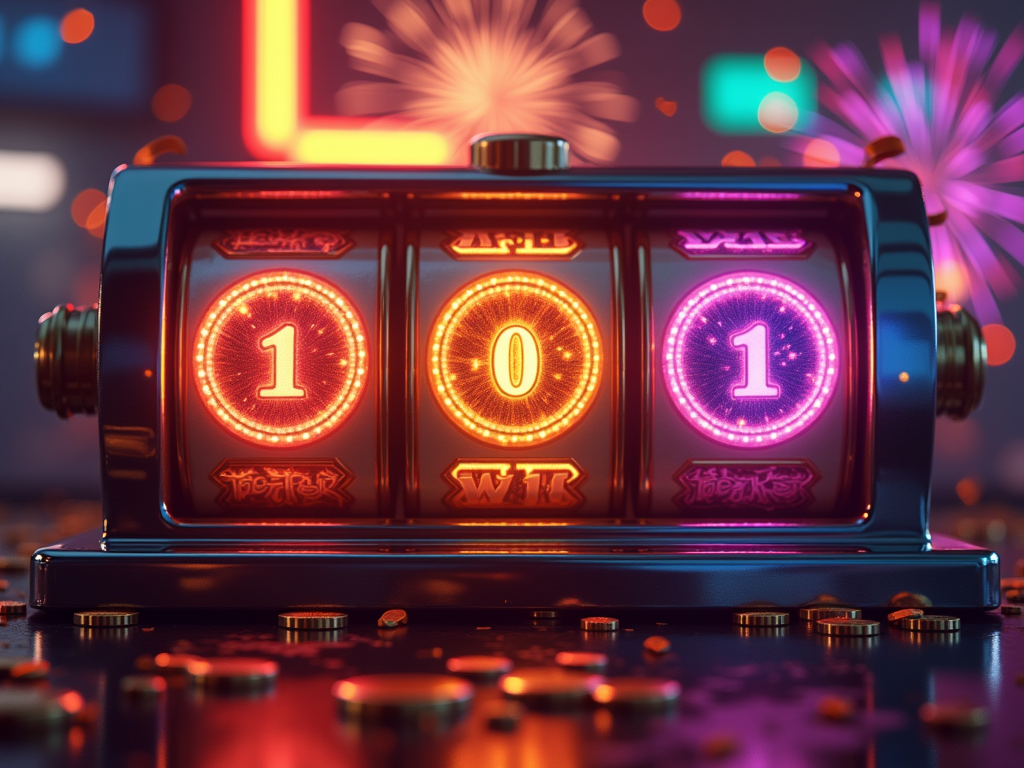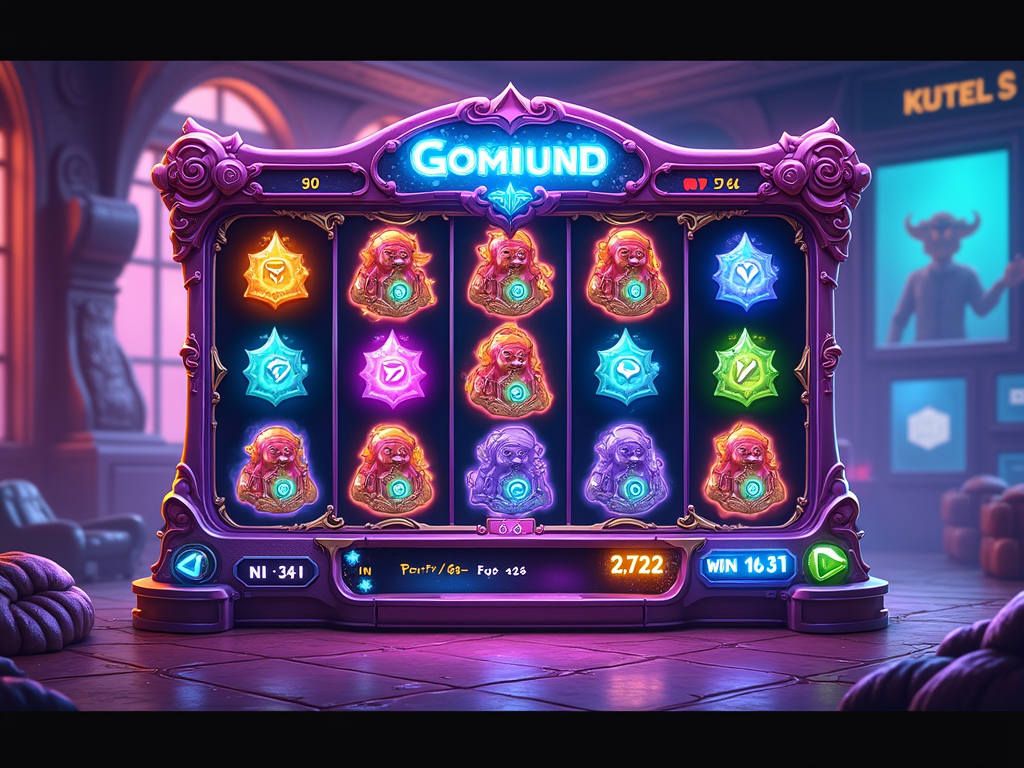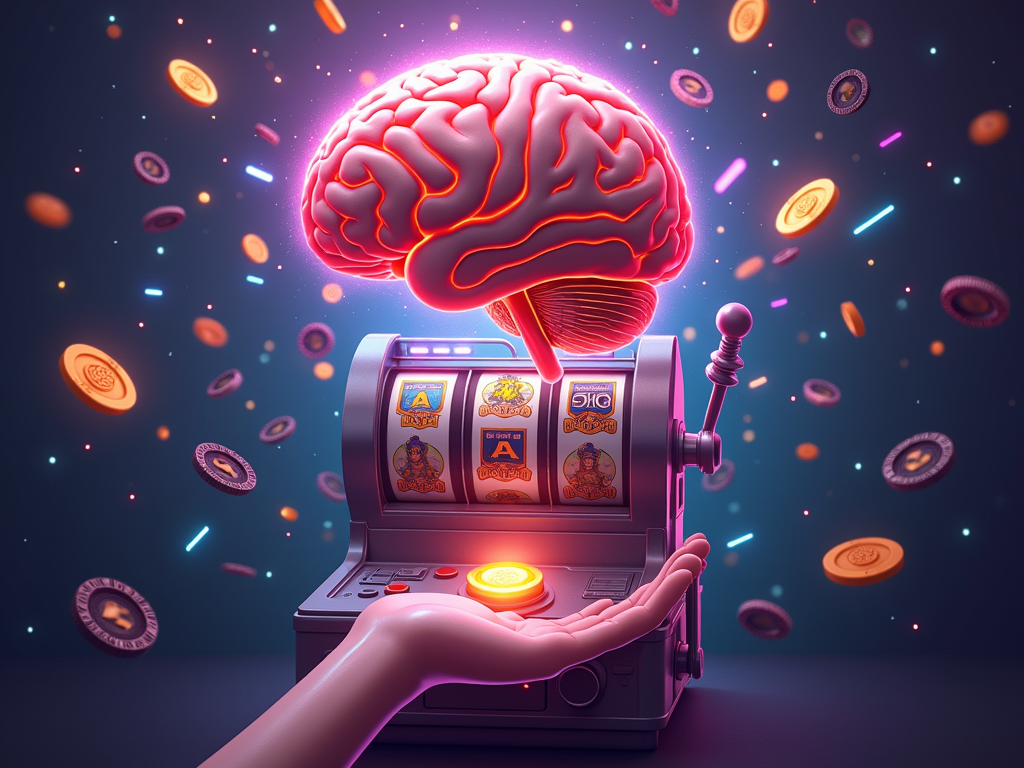The Psychology Behind Online Slots
Online slots tap into core psychological triggers through a calculated mix of unpredictable rewards and sensory stimulation, creating an absorbing gaming experience. The games pair proven behavioral science with advanced graphics and sound to keep players fully engaged.
Key Takeaways
- Variable ratio reinforcement schedules create unpredictable reward patterns that keep players engaged
- Near-misses trigger reward responses in the brain similar to actual wins, maintaining player interest
- Multisensory feedback through lights, sounds and animations creates an absorbing “flow state”
- Interactive elements and bonus features generate an illusion of control and strategic involvement
- Gamification features like achievements and level systems add extra layers of engagement beyond monetary rewards
The Purpose of Each Design Feature
Each element serves a specific purpose in the slot machine’s design. The random reward schedule triggers dopamine release, while flashy visuals and sounds enhance the excitement. Bonus rounds add an active component, making players feel more involved in the outcome. Progress systems borrowed from video games provide extra motivation beyond simple cash prizes.
The Overall Effect
The end result pulls players into an alternate reality where time fades away and worries disappear. This combination of psychological and sensory factors creates a deeply engaging experience that keeps players coming back for more spins.
I’ve found these mechanics work together seamlessly to maintain interest through both wins and losses. The games create an optimal balance of anticipation, rewards, and stimulation that taps into fundamental human drives.
The Science Behind Slot Machine Psychology: How Your Brain Gets Hooked
Understanding Variable Ratio Reinforcement
The psychological pull of online slot machines operates through proven behavioral principles that tap into your brain’s reward system. The key mechanism at play is the Variable Ratio Reinforcement Schedule (VRRS), which creates an unpredictable pattern of rewards that keeps players engaged and coming back for more.
Think of it like checking your phone for notifications – you never know exactly when you’ll get that next dopamine hit from a message or like. The same principle applies to online slots, where each spin could potentially deliver a win, triggering that rush of excitement.
The Dopamine Effect
Your brain releases dopamine not just during wins, but in anticipation of potential rewards. This creates a powerful cycle: the uncertainty of when you’ll win next actually heightens the pleasure response in your brain. The anticipation becomes almost as rewarding as the win itself.
Here’s what makes slot machines particularly effective at triggering these responses:
- Near-misses that create the illusion of almost winning
- Random reward patterns that maintain excitement
- Quick play cycles that enable rapid reward anticipation
- Visual and audio cues that heighten emotional engagement
- Progressive jackpots that fuel “what if” thinking
This combination of psychological triggers makes different types of slot games particularly captivating. The VRRS system leads to high response rates from players and makes the behavior resistant to extinction – meaning once you start, it can be challenging to stop.
The unpredictable nature of wins mirrors other addictive behaviors in modern life. Just as you might habitually check social media for updates, the slot machine’s random rewards create a similar compulsive pattern. The brain’s reward system doesn’t distinguish between these different types of uncertain rewards – it responds with the same neurological patterns.
I’ve found that being aware of these psychological mechanisms can help players maintain better control over their gaming habits. Understanding that these responses are by design rather than chance empowers more conscious decision-making while playing.
Why Near-Misses Keep You Playing
Let’s face it – there’s nothing quite like the thrill of seeing two jackpot symbols line up on online slots with big payouts, with that third symbol teasingly hovering just above or below the payline. These near-misses pack a psychological punch that keeps players coming back for more.
The Brain’s Fascinating Response to Almost Winning
Your brain processes near-misses differently than straightforward losses. When playing slots with multiple paylines, these close calls trigger reward-related regions in your brain, creating sensations surprisingly similar to actual wins. According to research by Luke Clark, the striatum — a crucial part of the brain’s reward system — lights up during near-misses, mimicking the activation patterns seen during victories.
Here’s what makes near-misses so captivating:
- They create an ‘almost won’ feeling instead of a clear loss sensation
- They occur up to 12 times more frequently than random chance would predict
- They trigger reward anticipation in your brain’s pleasure centers
- They fuel the belief that you’re “due” for a win
- They maintain engagement even during losing streaks
The psychology behind different types of slot games expertly uses these near-misses to maintain player interest. I’ve noticed how modern slots often incorporate elaborate animations and sound effects during these moments, amplifying their impact. This combination of psychological and sensory elements creates a compelling gaming experience that can make it challenging to step away from the reels.
These near-miss events tap into our natural optimism and pattern-seeking tendencies. Each close call reinforces the feeling that a big win is just around the corner, even though each spin remains completely independent of previous results. Understanding this psychological mechanism helps explain why slots maintain such strong appeal, even during extended periods without significant wins.

Creating the Perfect Sensory Storm
Online slots create an enticing mix of lights, sounds, and animations that work together to capture and hold your attention. Modern slots are packed with sensory rewards that spark excitement with every spin.
The Multi-Sensory Experience
The experience starts with visual feedback – bright flashing lights and vivid animations signal wins while themed characters dance across the screen. Think Egyptian pharaohs coming to life or pirates swinging from ship to ship. These aren’t random effects – they’re carefully crafted to boost engagement and immersion.
Sound plays an equally important role in creating excitement. The familiar cascade of virtual coins, celebratory jingles, and themed music work together to signal success. According to Dixon’s research, these audio cues are so effective that players often perceive losses disguised as wins (LDWs) as genuine victories, even when they’ve lost money on the spin.
I’ve noticed these sensory elements working together to create what experts call a “flow state” – where time seems to slip away as you’re pulled into the immersive world of the slot game. Here’s how different elements combine to maintain engagement:
- Visual stimulation through animated characters and symbols
- Strategic use of bright colors and flashing effects
- Perfectly timed sound effects that trigger reward responses
- Themed music that builds anticipation
- Quick spin animations that keep the action moving
- Character interactions that create emotional connection
The constant stream of sensory feedback does more than just entertain – it creates anticipation for the next spin. Even small wins trigger celebratory displays that feel rewarding, encouraging continued play. The excitement of each potential win keeps players engaged through the combination of sights and sounds.
These effects are particularly noticeable in LDWs, where losses are presented with the same sensory fanfare as wins. Dixon’s studies reveal that players’ physiological responses to LDWs mirror their reactions to actual wins, despite losing money on those spins. The celebratory sounds and visuals effectively mask the financial outcome.
The sensory experience in modern slots fills every moment with stimulation. From the anticipatory whirl of the reels to the triumphant crescendo of a win, each element is crafted to maintain engagement. This creates an absorbing environment where players can lose track of time while chasing the next exciting win.
The Control Illusion and Escape Factor
The stop buttons and interactive bonus features in modern slot machines create an engaging illusion of control for players. I’ve noticed how these seemingly strategic elements can make you feel like you’re influencing the outcome, even though that’s not actually the case.
Understanding the Illusion of Control
When playing popular online slot games, you might think hitting the stop button at just the right moment will lead to a win. But here’s the truth – the Random Number Generator (RNG) has already determined the outcome before those reels stop spinning. The stop button is really just speeding up the reveal of a pre-determined result.
Interactive bonus rounds add another layer to this psychological effect. These special features let you pick treasure chests, choose characters, or make other decisions that feel meaningful. Your brain starts connecting these choices to winning or losing, even though they don’t actually affect your odds.
This false sense of control ties into why online slots can be so captivating. Here are the key psychological factors at play:
- Near misses trigger reward pathways in your brain
- Interactive elements create emotional investment
- Quick play cycles feed into the “just one more spin” mindset
- Visual and audio rewards reinforce continued play
- The possibility of a big win keeps you engaged
The escape factor plays a significant role too. Slots demand your complete attention, pushing away daily stresses and worries. The immersive experience of spinning reels, engaging animations, and exciting sound effects creates a form of mental relief.
Research has shown this escape aspect is particularly significant for some players. A study by the Journal of Gambling Studies found that escape-seeking was the primary motivation for problem gamblers, highlighting how the absorbing nature of slots can become a coping mechanism.
The combination of perceived control and escape makes online slots particularly engaging. Your brain gets caught up in patterns, planning when to hit that stop button or which bonus option to choose. Meanwhile, the fast-paced gameplay keeps your mind focused on the immediate excitement rather than external concerns.
I’d emphasize that understanding these psychological triggers helps you maintain a healthier relationship with slot games. Recognizing that control is an illusion, and being aware of using slots as an escape, lets you make more conscious decisions about your gameplay.
Gamification: Beyond the Basic Spin
Rewards Beyond the Reels
Modern online slot games have evolved beyond simple reel spinning to include exciting gamification elements that keep players engaged. I’ve noticed how these features create an extra layer of entertainment through achievement systems and progress tracking.
Level-up systems let players earn experience points with each spin, unlocking new game features, bonus rounds, or enhanced payouts as they progress. These mechanics tap into our natural desire for advancement and mastery, making each gaming session more meaningful.
The addition of unlockable content gives players clear goals to chase. Here are some common gamification elements I’ve encountered:
- Achievement badges for hitting specific milestones
- Special characters or symbols that become available at higher levels
- Exclusive bonus games that open up through consistent play
- Custom reel sets that players can earn over time
Social Elements and Progressive Systems
Progressive jackpot slots add another engaging dimension by offering potentially life-changing prizes that grow with each spin. These massive potential payouts create buzz and excitement within the gaming community.
Leaderboards and loyalty programs transform solo gaming into a social experience. Players can compete for top positions while earning points redeemable for rewards. Collection systems spanning multiple sessions give players reason to return, as they gather special symbols or complete themed sets across different games.
Modern video slots often feature side quests and secondary objectives that run alongside the main game. These might include collecting specific symbol combinations, triggering special features a certain number of times, or completing themed missions. Such goals provide satisfaction beyond monetary wins and keep players invested even during losing streaks.
The combination of these elements creates a rich gaming experience that satisfies both our competitive nature and desire for achievement. By incorporating multiple reward systems, online slots maintain their appeal through various forms of positive reinforcement, making each spin part of a larger, more rewarding journey.

The Psychology of Loss and Recovery
Understanding Loss Aversion in Slot Play
I’ve found that the psychological impact of losses in online slots gameplay runs deeper than most players realize. The pain of losing money hits twice as hard as the pleasure of winning the same amount, according to Kahneman’s prospect theory, which shows a 2:1 ratio in how we process losses versus gains.
This heightened sensitivity to losses creates a fascinating chain reaction in slot machine behavior. After experiencing losses, players often fall into predictable patterns that can lead to problematic gambling. Here’s what typically happens:
- Players convince themselves that after several losses, a win must be coming soon
- Betting amounts increase as players try to recover previous losses quickly
- Time spent playing extends beyond initial plans due to loss recovery attempts
- The sunk cost fallacy kicks in – “I’ve already invested this much, I can’t stop now”
The psychological grip of loss chasing can be particularly strong with modern video slots. I’ve noticed that players often increase their bets after losses, driven by an intense desire to get back to even. This behavior stems from loss aversion – our natural tendency to strongly prefer avoiding losses over acquiring equivalent gains.
The sunk cost fallacy plays a significant role in extending gaming sessions. Players focus on money they’ve already spent rather than making rational decisions about future spending. This creates a cycle where losses lead to increased betting, which can result in more losses and even higher stakes.
Understanding these psychological triggers is crucial for maintaining control while playing slots. Loss aversion shouldn’t drive betting decisions, and past losses shouldn’t determine future bets. Each spin stands alone as an independent event, regardless of previous outcomes.
Sources:
Clark, L., Lawrence, A. J., Astley-Jones, F., & Gray, N. – Gambling near-misses enhance motivation to gamble and recruit brain regions associated with addiction
Dixon, M. J., Harrigan, K. A., Sandhu, R., Collins, K., & Fugelsang, J. A. – Losses disguised as wins in multiline slot machines
Kahneman, D., & Tversky, A. – Prospect Theory: An Analysis of Decision under Risk
Langer, E. J. – The Illusion of Control
Schüll, N. D. – Addiction by Design: Machine Gambling in Las Vegas
Skinner, B. F. – The Behavior of Organisms





